Stand at the end of any triathlon or running race and we guarantee you that you will see a lot of athletes stumbling over the line in Hoka running shoes.
The brand's rise in popularity over the past decade or so has been nothing short of meteoric.
Of course, there's a reason for that. Hoka makes great shoes (though not all hit the mark), with the combination of cushioning, responsiveness and light weight proving to be a golden ticket.
But what are the best Hoka running shoes on the market right now? With the help of our expert test team, we're going to take a look. But first, here's a little more on the brand's birth and ascendency...
The history of Hoka
Hoka was founded in 2009 (the brand was called Hoka One One back then) by two former Salomon employees (Nicolas Mermoud and Jean-Luc Diard) in Annecy, France, wanting to create a shoe that allowed them to run downhill faster.
The brand stood in contrast to the era’s minimalist ‘barefoot’ movement spearheaded by Born to Run author Chris McDougall and exemplified by the Vibram Fivefingers, which themselves were a response to the heavily-cushioned trainers that dominated the run market in the 2000s.
Both Hoka and minimalist shoes, though, offered low heel-to-toe drops and encouraged athletes onto their mid and forefoots to improve running economy.
Derided as clown shoes upon their arrival in multisport circles, Hoka started gaining traction in trail and then tri circles a couple of years after their launch.
Our first review in 2011 labelled their Bondi B as “one for the fitness market and not the performance runner,” but admitted that “we can almost smell the next big thing,” in regard to the oversized shoe formula that maximised cushioning but somehow kept weight to a minimum.
Soon the Spice Girls and Tweenie remarks were being drowned out by praise and ever-increasing popularity as triathletes – always early adopters of new tech – embraced the maximal ethos.
Ever a pioneer of multisport, six-time Ironman world champion Dave Scott became a Hoka athlete in 2015. “My first impression was ‘Wow, it looks like you’re on a pillow,” says Scott to 220.
“I was mocking my athletes for using them, but I just had to try them as I heard it may alleviate some of my knee and hip pain. A lot of shoes look for style first, but functionality is key and Hoka is top of the very best in that regard.
“And the misnomer with cushioned shoes is that, if you’re on a pillow you think you’re going to sink, but Hoka’s design of a meta-rocker allows a natural rotation of your foot.
“These shoes deliver what can only be described as a ‘snap’ on push-off, which is perfect for runners and triathletes.”
By 2017, Hoka had ousted Asics as the most popular brand in Dave Jewell’s influential ‘Kona Shoe Count’ at the Ironman World Championships, and it's gone from strength to strength ever since.
Best Hoka running shoes for racing
Hoka Carbon X 3
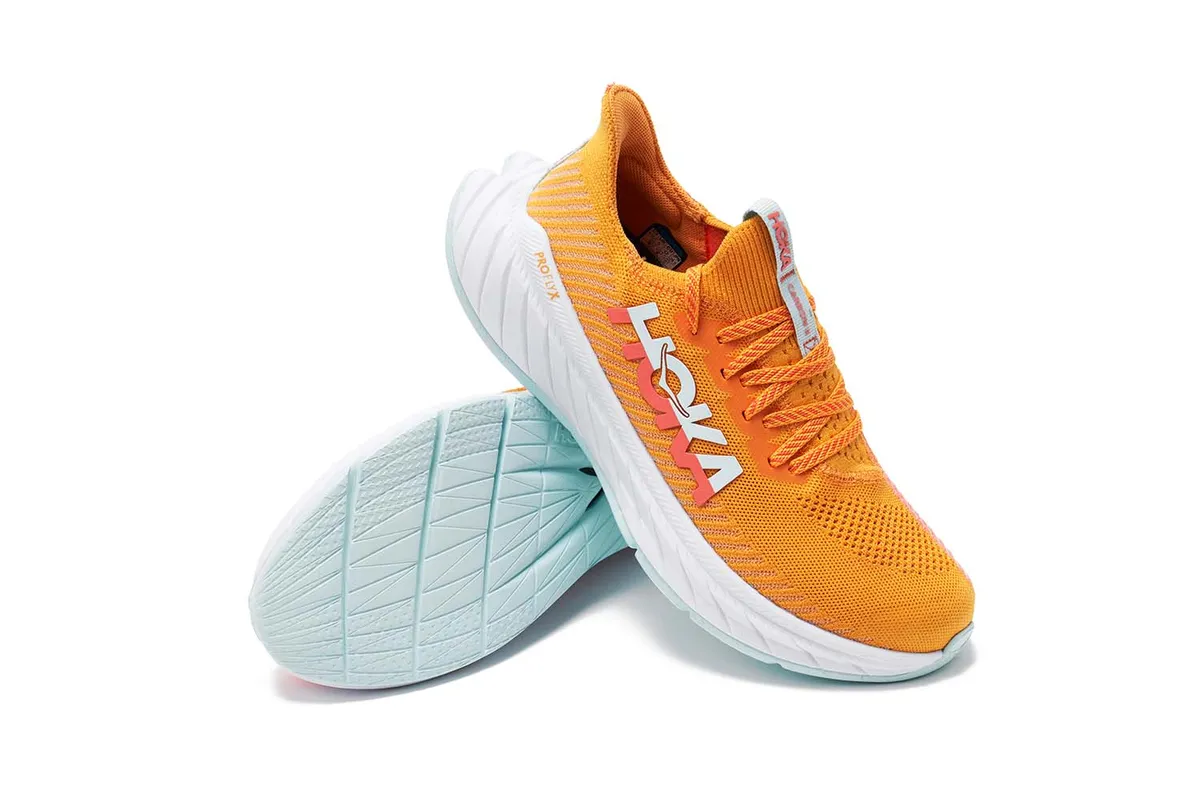
The third iteration of the Carbon X proved to be the best one yet, with our tester awarding it an impressive 88%.
After covering many miles in the shoe, we praised it for feeling propulsive, thanks to the carbon plate, and lightweight, recommending it for tempo efforts and road racing.
We were also fans of the new upper, which delivered improved breathability and impressive freedom of movement.
Comfort was also high, with the EVA midsole proving effective at soaking up ground impact, while the sock liner and heel tab meant it was easy to get on when you’re in a rush.
See our full Carbon X 3 review here.
Hoka Rincon 3
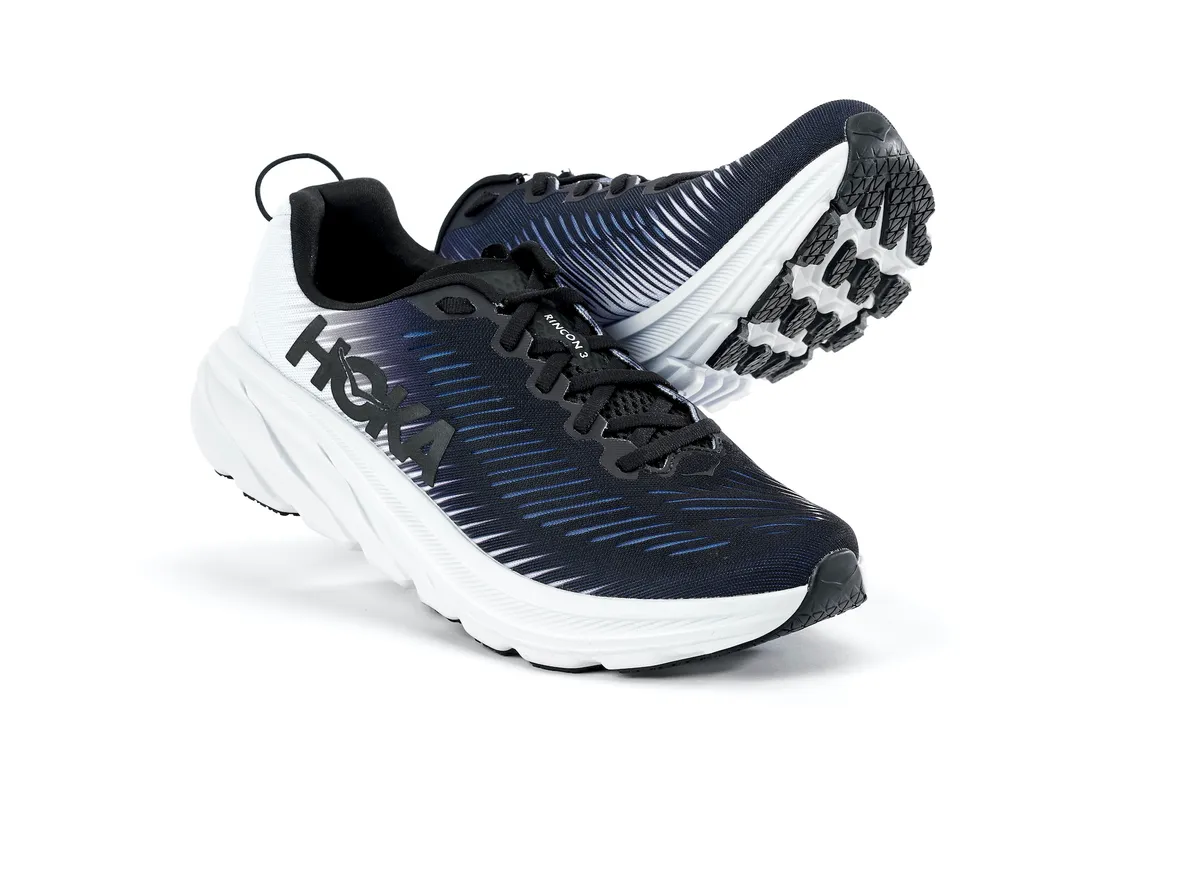
The Rincon series has along been a favourite of 220’s product testers and that was certainly the case with this edition.
We awarded it a lofty 94% after being impressed by how lightweight they felt despite offering adequate cushioning for a range of distances.
The upper breathes well, it’s quick and easy to pull on thanks to a heel loop and durability is boosted over the Rincon 2.
Better yet, the Rincon 3 feels propulsive, which is just what you want for racing.
See our full Hoka Rincon 3 review here.
Hoka Rocket X
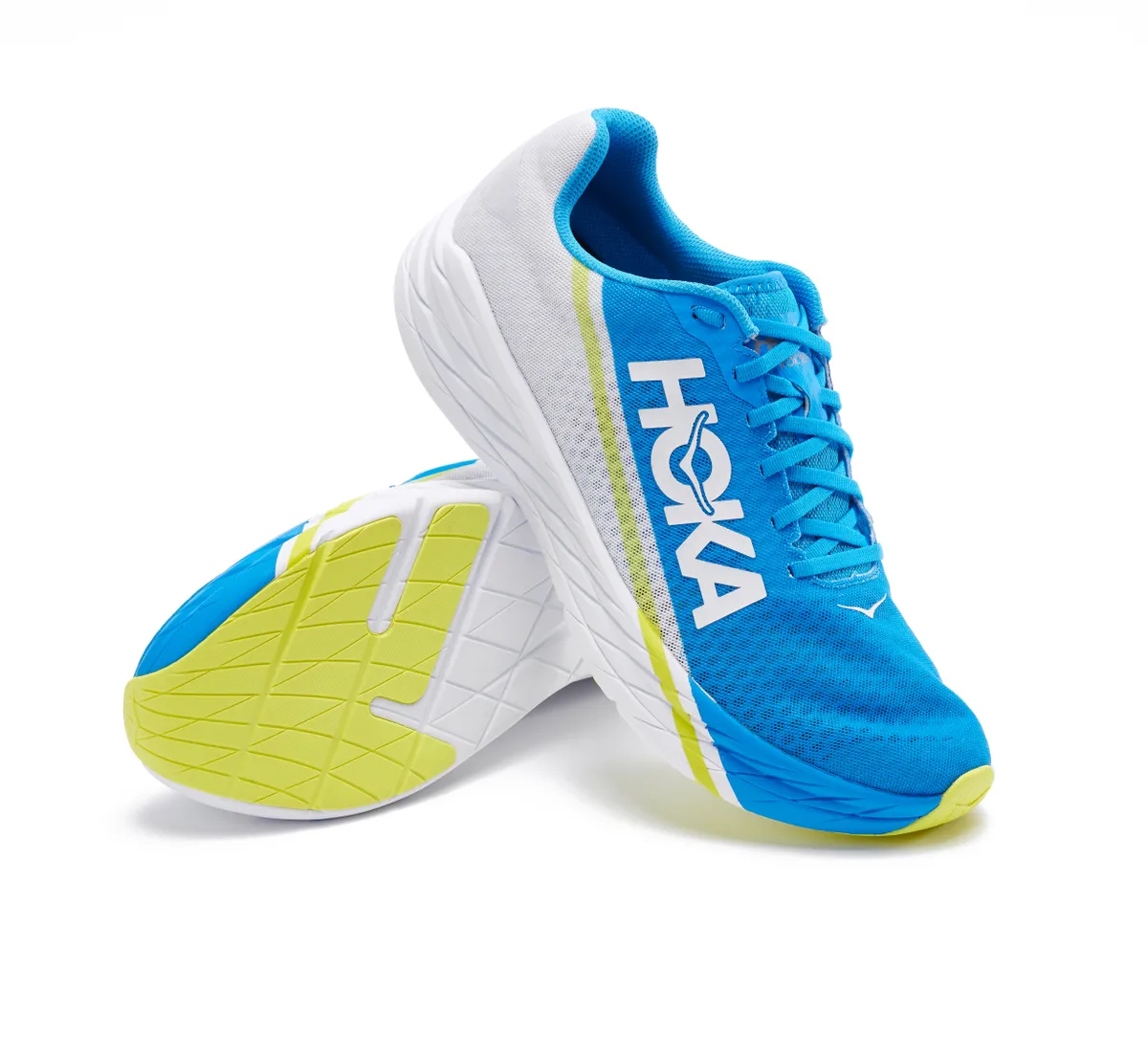
Here’s another shoe from Hoka that uses a carbon plate for added rebound and running efficiency.
The Rocket X proved both durable and comfy in our testing, and we’d be more than happy wearing them over any distance up to half marathon.
We awarded it a rating of 84%.
Read our full Rocket X review here.
Best Hoka running shoes for training miles
Hoka Bondi 8
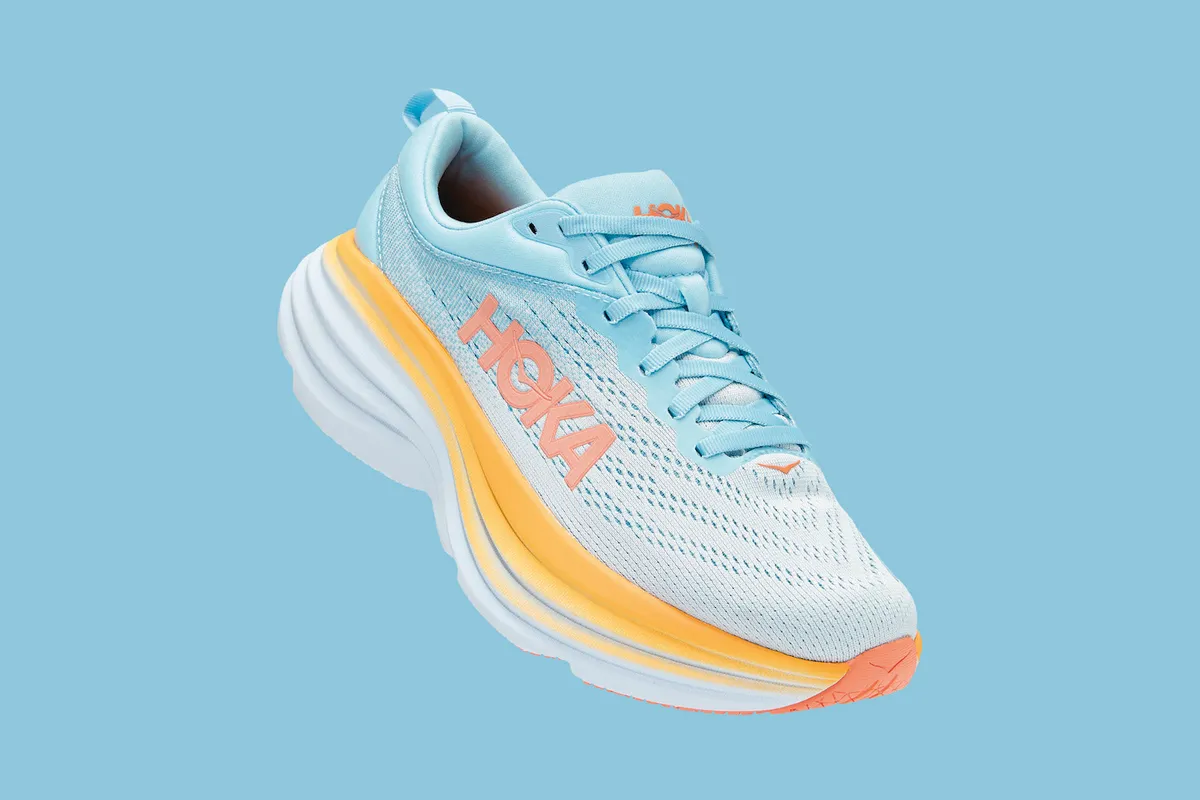
The Bondi range is Hoka’s most cushioned line of running shoes and it’s had a staunch following among some runners ever since it launched.
The eighth edition looks to be a great addition to the shoe’s history, with support and cushioning on offer in abundance. The result is a super comfortable, plush ride.
After a period of testing, we were impressed by the roomy toe box and the shoe’s performance over long miles, leaving us feel noticeably fresher than less-cushioned options.
See our full Hoka Bondi 8 review and verdict here.
Hoka Bondi X
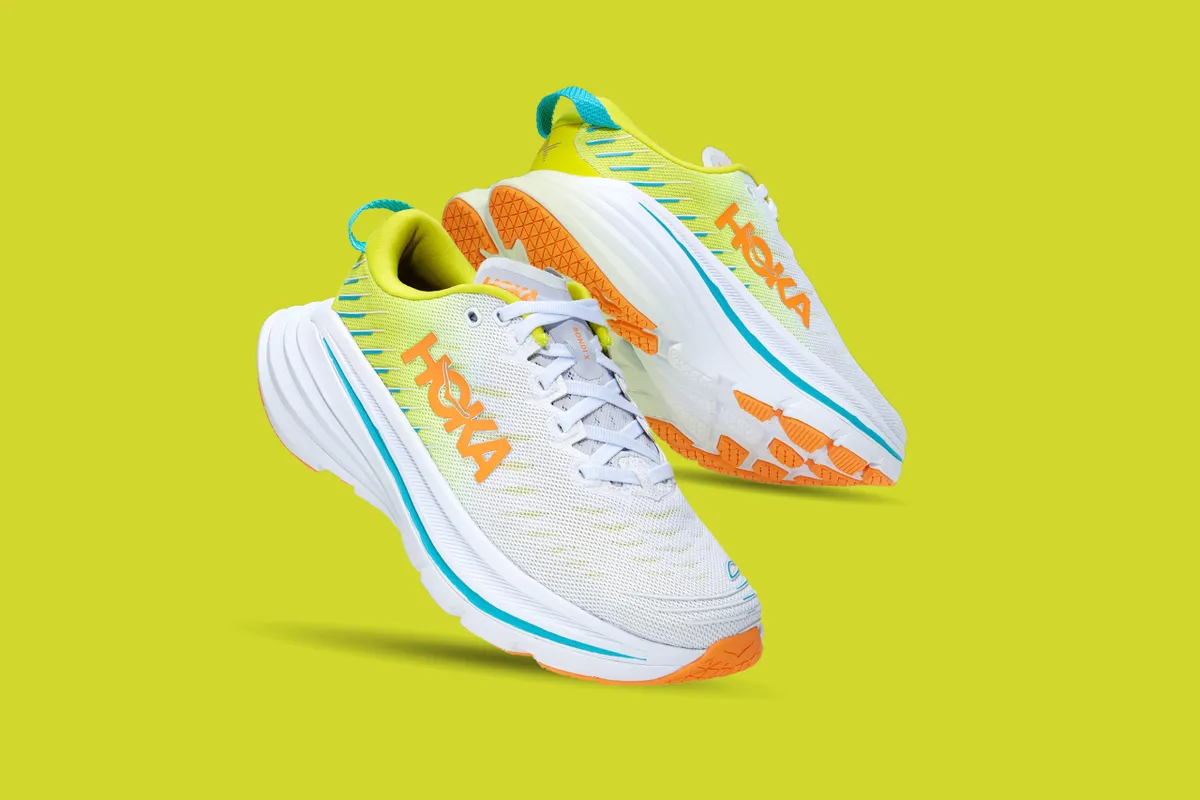
Here we have another Bondi shoe, but this time it comes complete with a carbon-fibre plate, the brand’s trademark Meta-Rocker and a 5mm drop.
In practice, these elements delivered a smooth, slightly bouncy, but stable ride. They encourage you to push on, while the EVA midsole provides soft cushioning underfoot.
Comfort is high, with the latter combining with a breathable mesh upper to good effect. This is clearly a bulky shoe, with a stack height of 33.5mm and a weight of 330g per shoe (UK11).
Combined with the soft cushioning, this means the Bondi X wouldn’t be our first choice for long-distance triathlons where we want to push the pace, but it is a great shoe for eating up easy efforts and long miles in training, which is why we awarded it 85% in our review.
Find more top-rated footwear in our guide to the best budget running shoes you can buy today.
